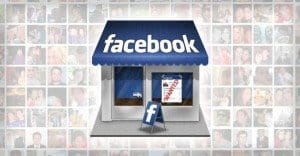 Written by ContentPowered.com
Written by ContentPowered.com
Buying likes is pretty great. You spend five bucks through a website that specializes in five dollar transactions, and you get in touch with a specialist using unique proprietary software to jump your page metrics. Then you sit back and watch as your site grows by thousands of followers every day. What’s not to like?
Savvy marketers are already questioning the veracity of my statements. Those who have researched like purchasing before – even read some of the other posts on this blog – already know a lot about what I’m going to say.
Buying Facebook Likes is Bad, Okay?
That is, it’s bad when you do it poorly. After all, when you run a Facebook ad through Facebook themselves, with the Page Likes objective, you’re directly converting money into page likes. That’s buying likes. When you run ads on third party websites, or contract services to do it for you, and those ads lead people – qualified, interested people – to like your page, that’s buying likes.
These methods of buying likes are perfectly okay. It’s only when you start buying likes through a Fiverr gig, or buying black hat software to get fake likes, or putting your URL into circulation with clickfarms in third world countries, that you begin to suffer.
More likes is not better. Better likes is better. It’s pretty simple, yet a lot of businesses don’t get it until it’s too late and they have thousands of low-quality followers to clean up.
How Facebook Filters Posts
It’s an often-cited statistic that if you were to remove Facebook’s algorithm and allow an unfiltered feed through, the average user would be flooded with 1,500 posts on average every dat. This is compared to the current filtered feed, which serves around 300 posts to a user each day.
How does Facebook determine which posts from which users you should see? It’s a complex calculation based on how often you interact with the originator of the post, how popular the post is, who posted it, what type of post it is, how recently it was posted, how much you’ve interacted with other posts of similar types, how aligned with your interests the post is, and other factors. This algorithm is known as EdgeRank, though the name is a bit of a misnomer. The actual EdgeRank was a previous, much more limited version of the algorithm currently in service. The current algorithm has no other name.
That’s all from a user perspective. What about from a business perspective? You’re the page, you’re the one making the post, and you want it to be seen by as many of your followers as possible.
Facebook uses this calculation between you and every one of your followers. It essentially chooses the top 6% or so of your followers and shows your post to them. It also peppers in some wildcard users, to give them a chance to re-engage with your brand and boost their EdgeRank. The more of those users who like and engage with your post, the more additional users see it; this is Viral Reach, which you can research on your own time. Homework!
Now, that 6% number is not flat. It’s an average based on measurements of brands willing to share their information. It’s also gone down significantly over the last few years.
Increasing competition for attention, with a fixed amount of attention per user, plus the increasing average quality of posts, means that it’s harder than ever to get a post in front of your users. Couple this with Facebook’s subtle trend of encouraging paid ads in favor of organic posting, and you have a perfect storm of difficulty. It’s just really, really hard to get your users to see your messages.
Good Like Buying
If you’re buying likes in the good way – through Facebook ads or a third party advertising service using white hat means – the people following your page will be highly interested and engaged. They like your brand and they want to know more, that’s why they clicked through to like your page in the first place, even if you paid for it to happen./
Therefore, when EdgeRank kicks in, it discovers that the number of people who meet the minimum criteria for being shown your posts is above 6%. Maybe it’s 7%. Maybe it’s 10%. Whatever the case, you have a higher percentage of people seeing your posts. This leads directly to higher engagement rates, higher viral reach, and higher conversion rates depending on the type of conversion you’re measuring.
This is a good thing, and is why it’s a good idea to buy Facebook likes through Facebook’s PPC system, even if you’re just spending a single dollar a day.
Bad Like Buying
Now let’s look at the other end of the spectrum. You’re spending $5 a month on Fiverr to get 100,000 new followers. Those followers, however, don’t give a rat’s ass about your business. They’re getting paid pennies to like a list of URLs they’re given, and that’s it. They don’t browse their feeds, they don’t visit pages they like, and they definitely don’t click through to websites you promote. Heck, chances are the product you’re trying to sell costs more than they make in a month. You have exactly 0% of a chance to make a conversion off of any of those likes.
Now you make a post on Facebook, and only 1% of your users see it. Your reach is absolutely destroyed. Maybe that 1% now is the same as the 6% before, but it doesn’t matter. Remember those wildcards I mentioned? It’s an effect of stretching the minimum requirements for seeing a post. Facebook drops those requirements, because it sees the average EdgeRank of a user on your page is really low. If it used normal requirements, your posts wouldn’t show up anywhere.
As it turns out, a good portion of the people who DO see your post end up being these clickfarm workers or robot accounts. Accounts that don’t click it, don’t share it, don’t comment, nothing. Not only is your organic reach low, but your viral reach is nonexistent.
So, you know. Buying bad Facebook likes is a bad idea. Don’t do it, kids.


